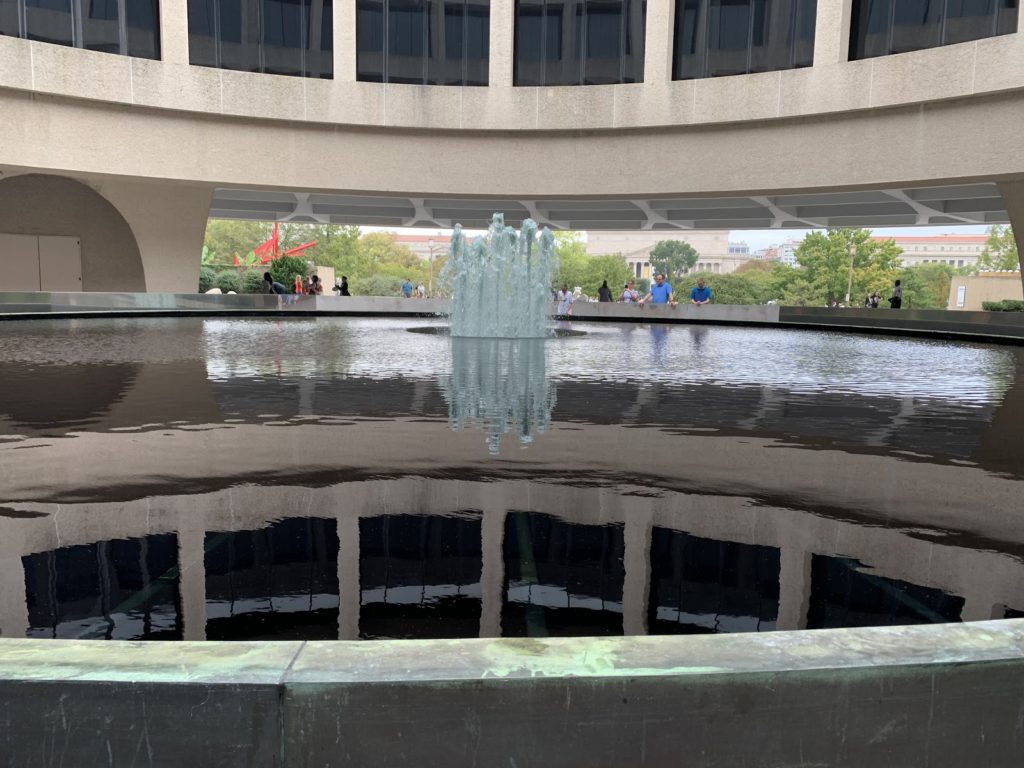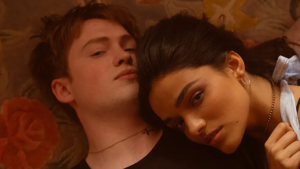Exploring Lee Ufan’s Open Dimension

"Fountain Plaza"
Image courtesy of Regina Vahey
By Regina Vahey
The dialogue between the natural world and the industrial world is at the center of Lee Ufan: Open Dimension at the Hirshhorn Museum and Sculpture Garden. The installation opened on September 27, 2019, and will be open to the public until September 13, 2020.
The gloomy weather in the capital added an extra element to the ambiance of the exhibit. There was a lack of harsh morning light which allowed visitors to view each sculpture without the distraction of jarring glares from the sun. Because the Hirshhorn is a popular museum among both locals and tourists, the indoor and outdoor exhibits were admired by many.
The expansive collection of 10 sculptures are displayed throughout Hirshhorn’s 4.3-acre outdoor space. Lee was conscious of the museum’s architecture when creating the sculptures, as he created each piece in a way that they each respond to the grounds of the Hirshhorn. The materials used for each work are a combination of components including stainless steel, stone, water, gravel, and acrylic paint. As visitors walk around the museum’s cylindrical building, they are able to encounter Lee’s open artworks. In the center of the Hirshhorn’s outdoor plaza is a stainless steel fountain that is named, “Fountain Plaza.”
These sculptures are new pieces in Lee Ufan’s Relatum series that he created as an “open dimension,” or a space to experience the relationship between humans, those things made by humans, and the larger natural world. By placing unaltered materials such as stainless steel and stone together, Lee wants to bring awareness to the elements of the world.
According to Hirshhorn’s article on the installment, “A plain, natural stone, a steel plate—which is a solidified form of components extracted from stone—and existing space are arranged in a simple, organic fashion,” Lee said. “Through my planning and the dynamic relationships between these elements, a scene is created in which opposition and acceptance are intertwined.”
Lee Ufan is a Korean artist who founded the avant-garde art movement Mono-ha, or the “School of Things,” that originated in Japan in the 1960s and 1970s. The core idea of Mono-ha is to portray the world as it is using minimalistic means. By limiting the materials Lee uses, he creates a dialogue between nature and humans that is unlimited. On a broader scale, the juxtaposition between the metropolitan area where the Hirshhorn Sculpture Garden is placed and the green space where the individual sculptures are within the institution parallel Lee’s ideology of his art.
Lee Ufan: Open Dimension is an exhibit for anyone who wants to explore the relationship between the natural world and the industrial world. Each sculpture is simple and open-ended which allows the viewer to interpret the piece in their own way.







